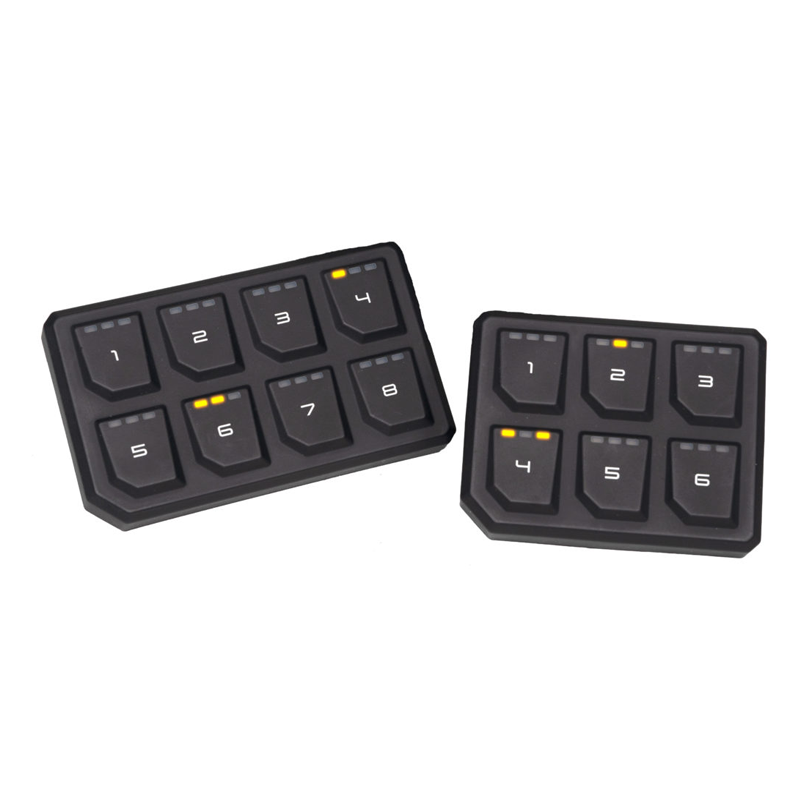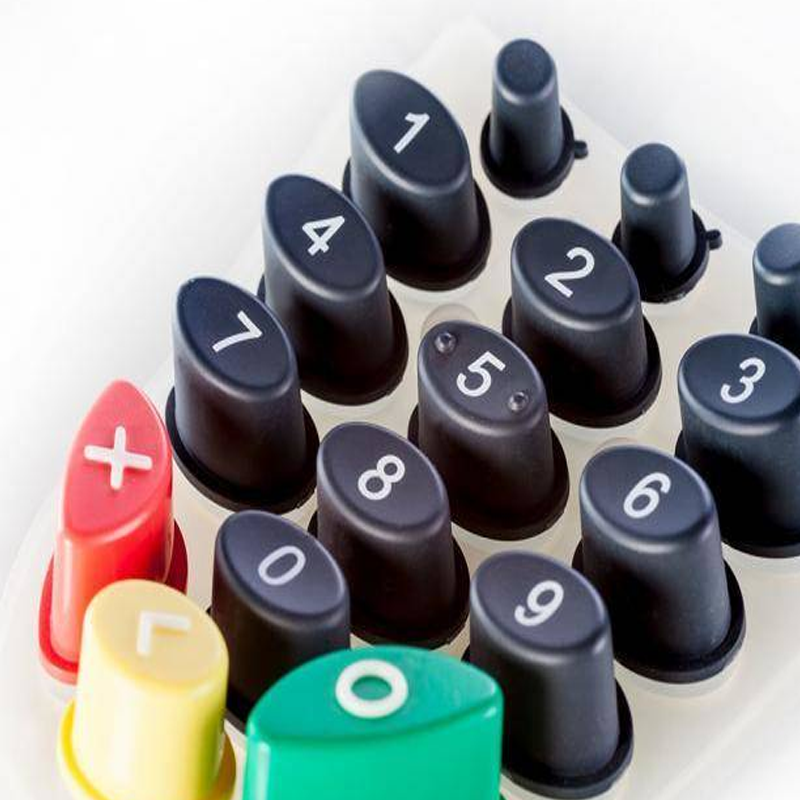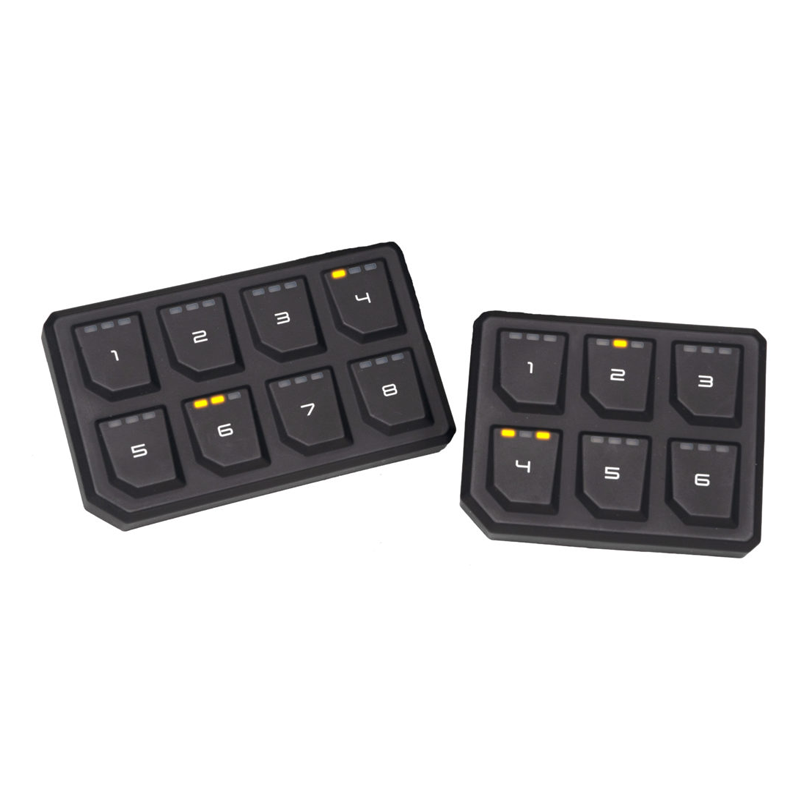Welcome to the Rockeypad blog, where we help you navigate the complexities of user interface design. In today’s highly competitive market, selecting the right keyboard technology is crucial for ensuring efficiency, reliability, and optimal user satisfaction. Whether you are manufacturing medical devices, consumer electronics, or industrial control panels, the decision between mechanical and membrane keyboards can significantly impact your product’s performance. At Rockeypad, we pride ourselves on delivering custom keyboard solutions that are engineered to meet the most demanding requirements. In this comprehensive guide, we’ll explore the pros and cons of mechanical and membrane keyboards to help you make an informed decision for your next project.
Understanding the Basics
Before diving into the detailed comparison, it is essential to understand the fundamental differences between mechanical and membrane keyboards. Mechanical keyboards utilize individual, spring-loaded switches for each key. These switches are designed to register each keystroke with a distinct tactile and audible feedback, making them ideal for environments that require precise and rapid typing. On the other hand, membrane keyboards operate using a single rubber or silicone membrane layer beneath the keys. When pressed, the membrane completes an electrical circuit, registering the keystroke. This design offers a quieter and more cost-effective solution compared to mechanical keyboards.

Durability and Ruggedness
One of the most significant considerations when choosing a keyboard is durability. Mechanical keyboards are renowned for their robust construction. Each key in a mechanical keyboard is equipped with its own switch, which can typically withstand between 20 and 50 million keystrokes. The use of high-quality materials and precision-engineered components ensures that these keyboards maintain their performance even under continuous, heavy use. The individual key mechanisms are also designed to resist debris and spills, meaning that if a key fails, it can often be replaced without compromising the entire unit. This makes mechanical keyboards especially well-suited for high-demand applications in industrial, gaming, and professional settings.
In contrast, membrane keyboards, while generally more affordable, typically have a shorter lifespan, often rated at around 10 million keystrokes. The single membrane layer that registers keystrokes can degrade over time. Factors such as rubber dome fatigue, accumulation of dust and debris, and exposure to ultraviolet light can lead to inconsistencies in key responsiveness. As the membrane ages, users may notice a decrease in typing speed and accuracy, making membrane keyboards less ideal for environments requiring high durability and continuous use.

Tactile Feedback and User Experience
Tactile feedback is a critical factor in the typing experience. Mechanical keyboards are favored for their clear, physical feedback. When a key is pressed, the mechanical switch produces a distinct tactile bump and audible click, which not only enhances typing accuracy but also provides satisfying confirmation for each keystroke. This level of feedback is particularly beneficial in situations where precision is paramount—such as in medical applications, where the correct input can be critical for patient safety.
Membrane keyboards, however, offer a softer, quieter typing experience due to their rubber dome design. While this results in a more subdued tactile response, it can be an advantage in environments where noise is a concern, such as in hospitals, libraries, or open-plan offices. For users who prefer a quieter interface, membrane keyboards can provide a comfortable and less intrusive typing experience. Additionally, scissor-switch membrane keyboards, which feature a stabilizing mechanism beneath the keycaps, can offer improved tactile feedback compared to traditional membrane designs, striking a balance between noise reduction and typing responsiveness.

Customization Options
Both mechanical and membrane keyboards provide opportunities for customization, although the scope and nature of these options can vary significantly between the two. Mechanical keyboards are highly customizable. Manufacturers can choose from various switch types—including linear, tactile, and clicky variants—that cater to different preferences in terms of travel distance, actuation force, and sound. This level of customization enables OEMs to fine-tune the user experience, optimizing both usability and ergonomics for specific applications. Moreover, mechanical keyboards support extensive customization in terms of keycap design, backlighting (including per-key RGB options), and layout modifications, making them an attractive choice for high-end consumer products and specialized industrial equipment.
Membrane keyboards also offer customization, though to a lesser extent. While you may not have the same range of switch options as mechanical keyboards, membrane models can still be tailored with features such as RGB backlighting, integrated pointing devices, multimedia keys, and even USB-C connectivity for reversible plug orientation. Customization in membrane keyboards often extends to aesthetic elements like keycap design and color schemes, allowing manufacturers to align the product’s look with their brand identity. Although the tactile experience may be less adjustable compared to mechanical keyboards, the overall design and functionality can be optimized to meet the requirements of space-constrained environments and cost-sensitive applications.

Cost Considerations
Cost is invariably a significant factor in the decision-making process for any OEM. Generally, membrane keyboards tend to be more budget-friendly due to their simpler construction and lower material costs. The manufacturing process for membrane keyboards is less complex, resulting in lower production costs, which can be a decisive factor for projects where cost optimization is critical.
On the other hand, mechanical keyboards involve higher upfront costs due to the precision engineering of individual switches and the use of more durable materials. However, these higher initial costs can be justified by the longer lifespan and superior performance of mechanical keyboards, particularly in applications where heavy typing or rigorous use is expected. For industries where reliability and longevity are paramount, the long-term benefits of mechanical keyboards may outweigh the additional expense. Ultimately, the choice between mechanical and membrane keyboards should be guided by the specific needs and budget constraints of your project.
Noise, Portability, and Maintenance
The operating environment of your product is another important consideration. Membrane keyboards are known for their quiet operation and slim design, making them ideal for settings where noise reduction is critical, such as in medical facilities or quiet office environments. Their lightweight and compact build also facilitate integration into portable devices and equipment with limited space.
Conversely, mechanical keyboards, while offering superior tactile feedback and durability, tend to be bulkier and produce more noise due to the physical switches. This increased noise level can be a drawback in environments that require minimal sound, though some models are designed with noise-dampening features to mitigate this issue. Additionally, mechanical keyboards may require more frequent maintenance, such as cleaning and occasional lubrication, to maintain their optimal performance over time.

Summary Comparison
To summarize the key differences between mechanical and membrane keyboards:
– Durability:
Mechanical keyboards typically offer a lifespan of 20 to 50 million keystrokes, while membrane keyboards average around 10 million keystrokes.
– Tactile Feedback:
Mechanical keyboards provide a distinct tactile and audible response, ideal for precision and heavy typing. Membrane keyboards offer a softer, quieter experience, which is suitable for noise-sensitive environments.
– Customization:
Mechanical keyboards allow for extensive customization in switch type, keycap design, and layout options. Membrane keyboards provide customization in aesthetics and integrated features, such as pointing devices and multimedia controls, though they have fewer tactile customization options.
– Cost:
Membrane keyboards are generally more cost-effective to produce, while mechanical keyboards come with a higher initial investment but offer superior durability and performance over time.
– Noise and Portability:
Membrane keyboards are favored for their quiet operation and slim profile, whereas mechanical keyboards are heavier and louder, though some models are engineered to reduce noise.
Choosing the Right Keyboard Technology
When selecting a keyboard technology for your product, consider the following factors:
– Application Environment:
Identify whether the primary use will be in a high-noise, high-precision environment or in settings where quiet operation is essential. This will help determine whether the robust feedback of a mechanical keyboard or the silent operation of a membrane keyboard is more appropriate.
– Usage Frequency:
Evaluate the expected usage intensity. High-frequency applications, such as gaming or heavy-duty typing in industrial settings, may benefit more from the durability of mechanical keyboards.
– Customization Needs:
Determine the level of customization required. If your product demands highly specialized features and design elements, mechanical keyboards offer more extensive customization options. For products with simpler requirements, membrane keyboards can be a practical and economical choice.
– Budget Constraints:
Balance the need for advanced features and durability with your budget. While mechanical keyboards deliver superior performance, membrane keyboards provide a cost-effective solution for many applications.
– Maintenance Considerations:
Consider the maintenance and longevity of the keyboard. Mechanical keyboards may require more upkeep over time, whereas membrane keyboards offer ease of cleaning and lower maintenance needs.

Final Thoughts
At Rockeypad, we understand that the choice between mechanical and membrane keyboards is pivotal to the overall success of your product. Our team of experts is dedicated to helping you evaluate your needs and select the optimal keyboard technology for your application. We work closely with manufacturers across various industries—ranging from medical and industrial to consumer electronics—to ensure that our custom keyboard solutions not only meet but exceed your performance expectations.
If you are ready to explore tailored keyboard solutions that perfectly align with your project requirements, we invite you to reach out to us at Rockeypad. Our commitment to precision engineering, extensive customization options, and rigorous quality control makes us the ideal partner for your next project. Contact us today to discuss your specific needs and discover how our expertise can help you achieve unmatched user satisfaction and operational efficiency. We look forward to collaborating with you and driving your success with our state-of-the-art keyboard technologies.
